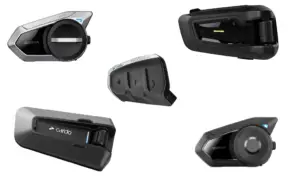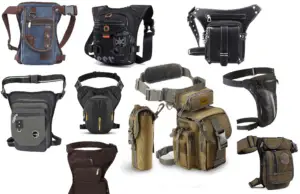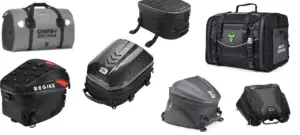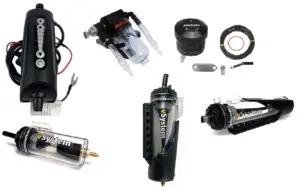Riding a motorcycle is super fun and it’s also cool for exploring new places. But when you find a nice spot and want to walk around, carrying your helmet everywhere is a hassle.
If you just leave it on your bike, there’s a chance someone might steal it, and helmets aren’t cheap. That would ruin the fun of checking out new sights.
So, the best thing to do is find a way to lock your helmet to your bike. That way, you don’t have to worry about it being stolen, and you can enjoy your time exploring.
Contents
How To Secure A Helmet To A Motorcycle?
There are 6 methods. Each method has its pros and cons. My personal favorite is using the motorcycle seat I have used this approach for 5 years and my helmet wasn’t stolen so far. (Knock knock on the tree =))
#1 Using the Seat
Many motorcycles come equipped with a designated rope in their tool kit, and some even feature a specialized hook for use with the rope. In my situation, I utilize a section of my motorcycle’s subframe, as you can see in the image below.
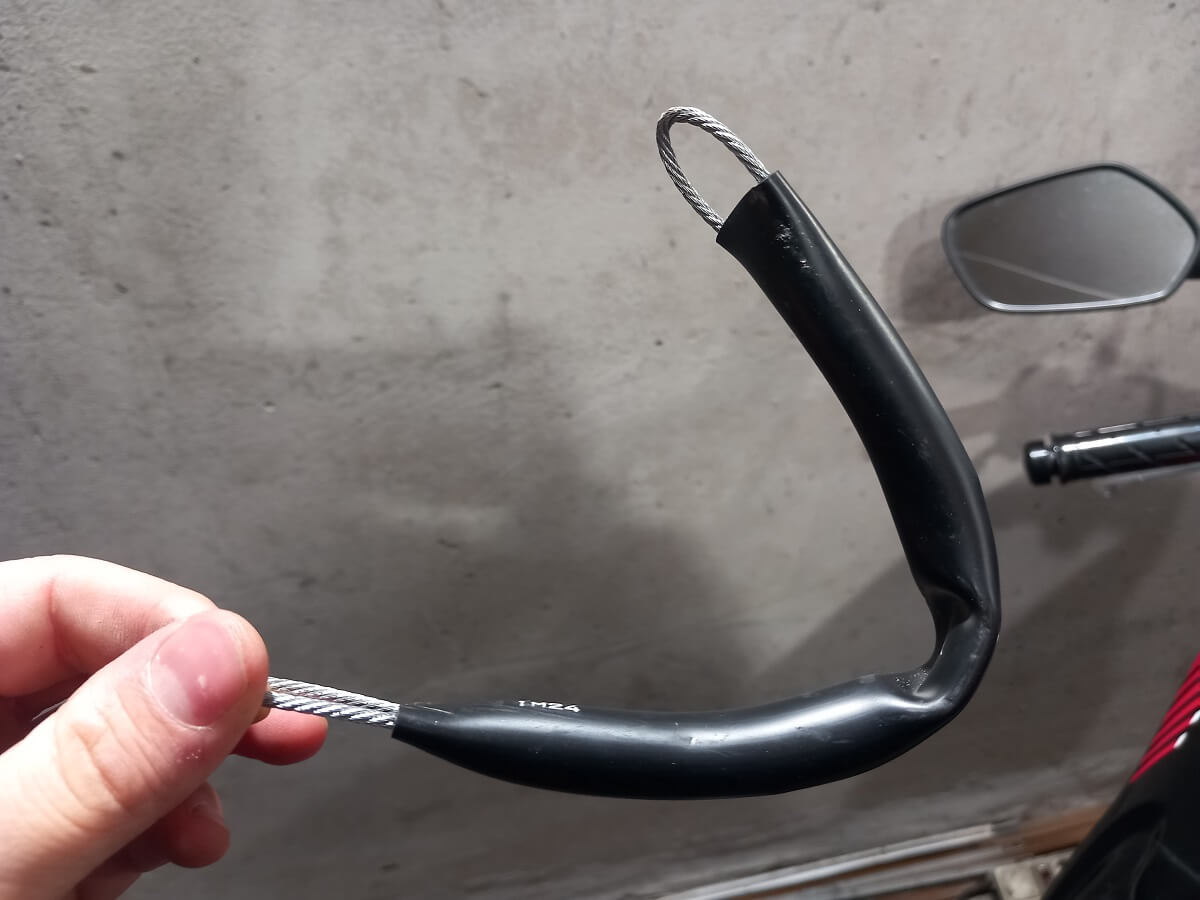
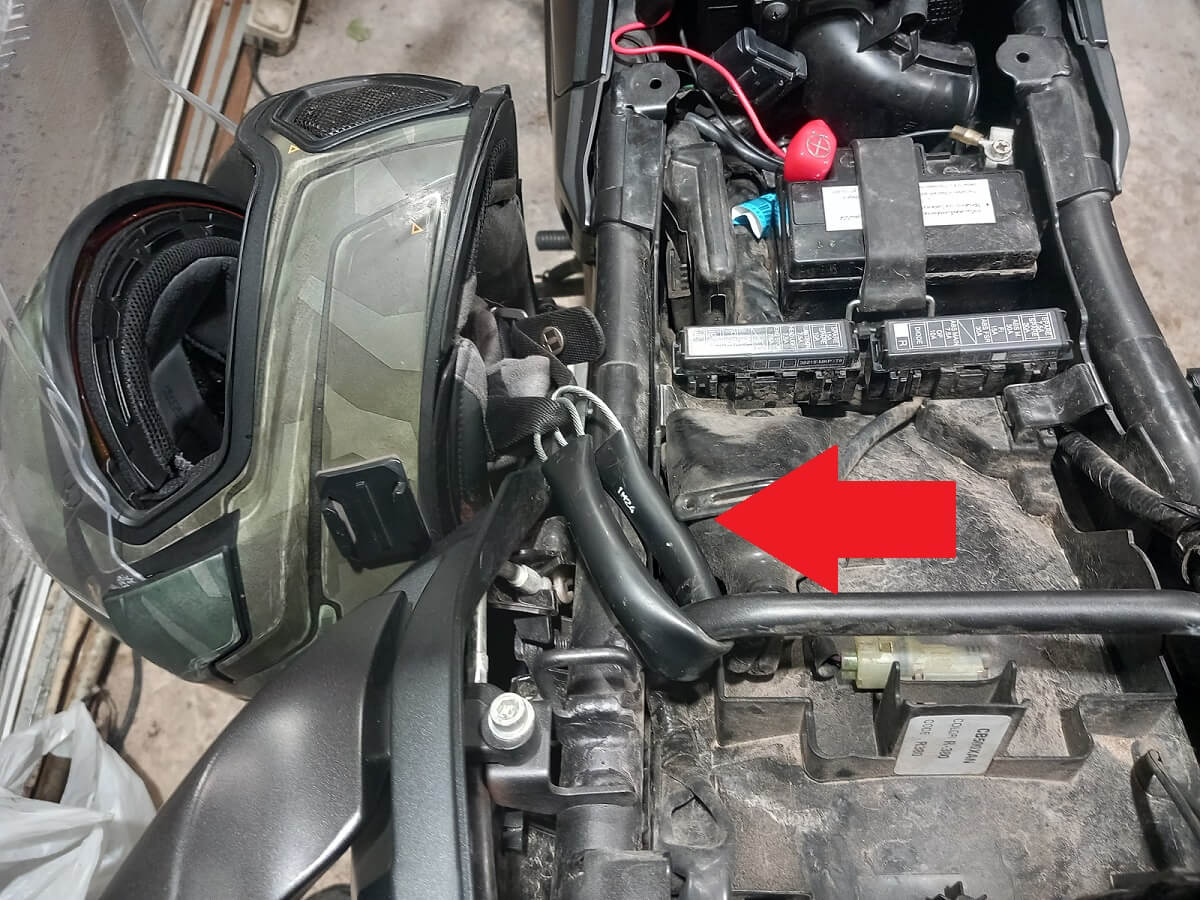
Now hook the rope under your bike’s seat to any frame part, either by threading it through or attaching one side of the U-ring to a hook. Once that’s done, lock up your helmet just like you put it on your head. Pull the helmet straps through the U-rings in the rope, as shown in the image above.
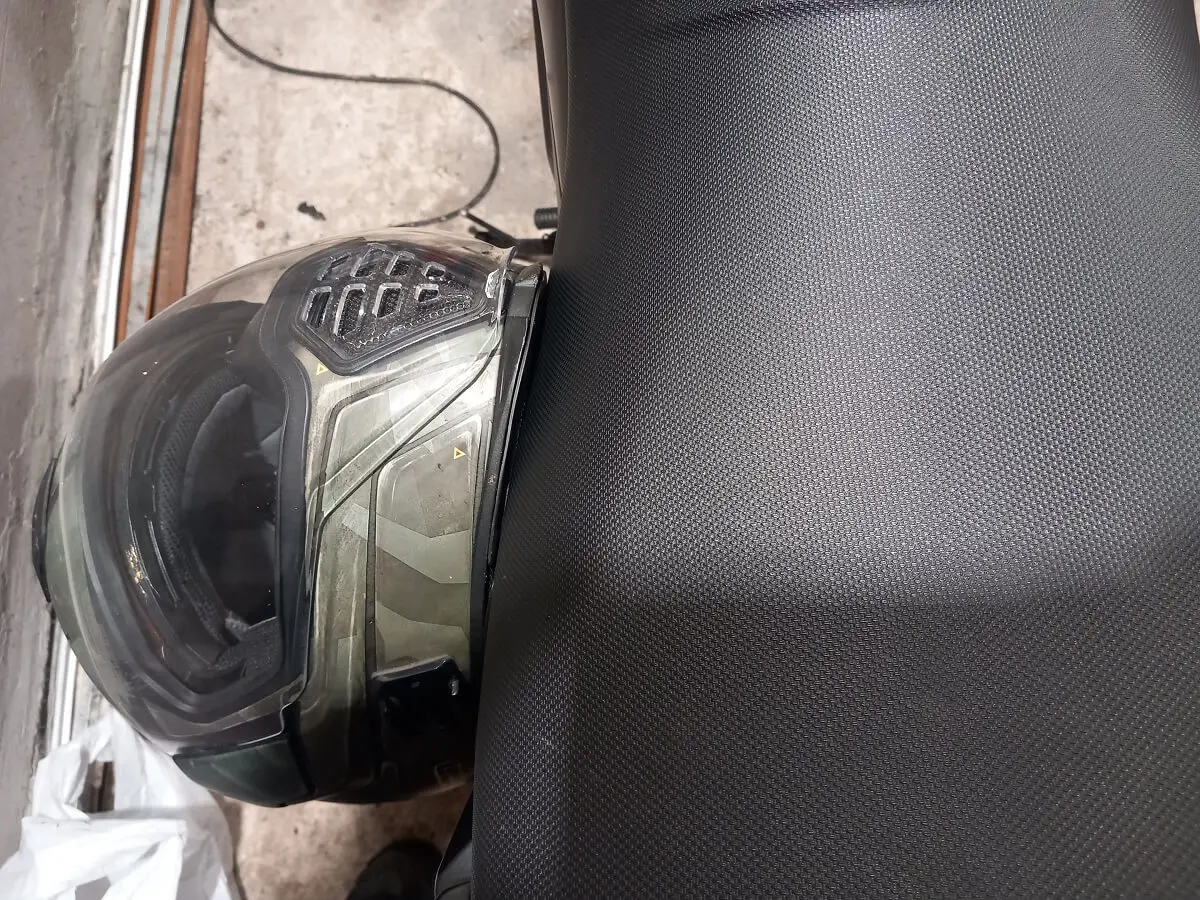
Snap the seat back on, and boom, your helmet’s secure. Since you need a key to take off the bike’s seat, your helmet’s pretty safe. So, you can just chill and take a walk without worrying about someone swiping your helmet.
In theory, you could wiggle the helmet from side to side to loosen the straps, but it would take some time – at least 10 minutes in my experience. Considering that most helmet thefts are opportunistic and not carefully planned, you can be confident that no one will bother attempting to steal it.
- Pros:
- Convenient, no additional equipment needed.
- Subtle, doesn’t draw attention to the helmet.
- Cons:
- Not all bikes have a built-in hook. Japanese bikes have it.
- Works only If your bike’s seat can be locked with a key.
- Not as secure as a lockable bag and other types of locks.
#2 Lockable Helmet Bag
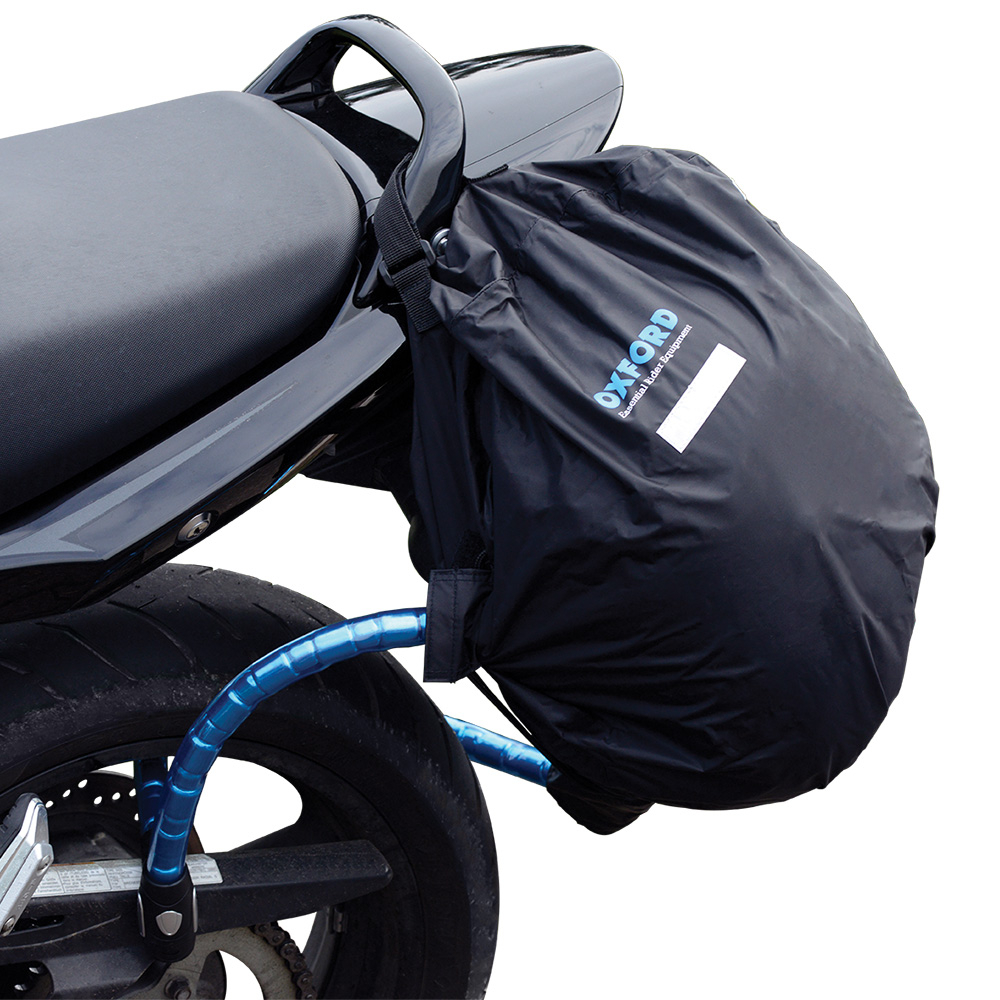
Lockable Helmet Bag has two holes where you can thread a lock through, right around where the helmet’s chin would be. But it doesn’t come with its own lock, so you’ve got to use your own. If you don’t have a lock, the bag isn’t much help in keeping your helmet safe. You could just lock your helmet with a regular bike lock, but the cool thing about this bag is that it also keeps your helmet dry and safe from bad weather. That’s something a lock on its own can’t do.
- Pros:
- Hides the helmet from plain view.
- Protects the helmet from the rain.
- More secure compared to using the seat approach.
- Cons:
- The required chain lock is bulky and takes away storage space on the bike.
- May not work with open-face helmets.
- Requires third-party chain or bicycle lock
#3 Using a Bicycle Lock
Just run the bicycle lock through the helmet’s chin bar or visor opening, then hook it onto your bike, like around the frame or some enclosed opening. This way, no one can just grab your helmet and run off with it while you’re not around. Bike locks are pretty tough, so they’re good for this. But, just a heads up, this doesn’t keep your helmet from getting wet or dirty if the weather’s bad. It’s great for quick stops, but maybe not the best if you’re leaving your helmet out for a long time or if it’s raining
- Pros:
- Versatile, can use heavy chains or lightweight systems.
- Can be easily attached to different parts of the bike.
- Cons:
- Security level varies based on the type of lock used.
- Lightweight systems might offer less protection against determined thieves.
- Does not protect the helmet from the elements.
- Won’t work with open-face helmets.
#4 Frame Lock
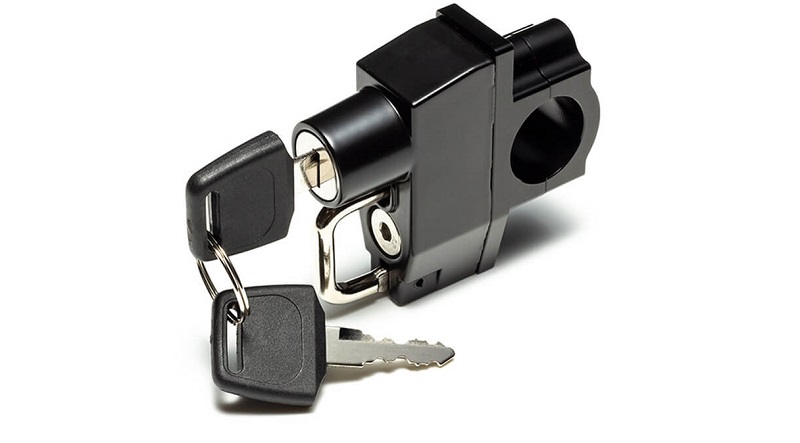
A Frame Lock is a handy little gadget that you can attach to your motorcycle’s frame or handlebars. It lets you lock your helmet right to your bike. It’s pretty simple to use – it has a metal clamp that hooks through the D-ring on your helmet to keep it secure.
The cool part? It’s really small and doesn’t take up much space, especially if you put it on your handlebars. Plus, it doesn’t use any of your bike’s storage space, which is great. Note, it works only with helmets that have D-ring straps.
- Pros:
- Extremely secure, designed to fit specific bike models.
- Often installed in less accessible areas, making them harder to tamper with.
- Cons:
- Compatibility limited to helmets with double D-rings.
- Does not protect the helmet from the rain.
- May require professional help to install.
#5 Chain Lock
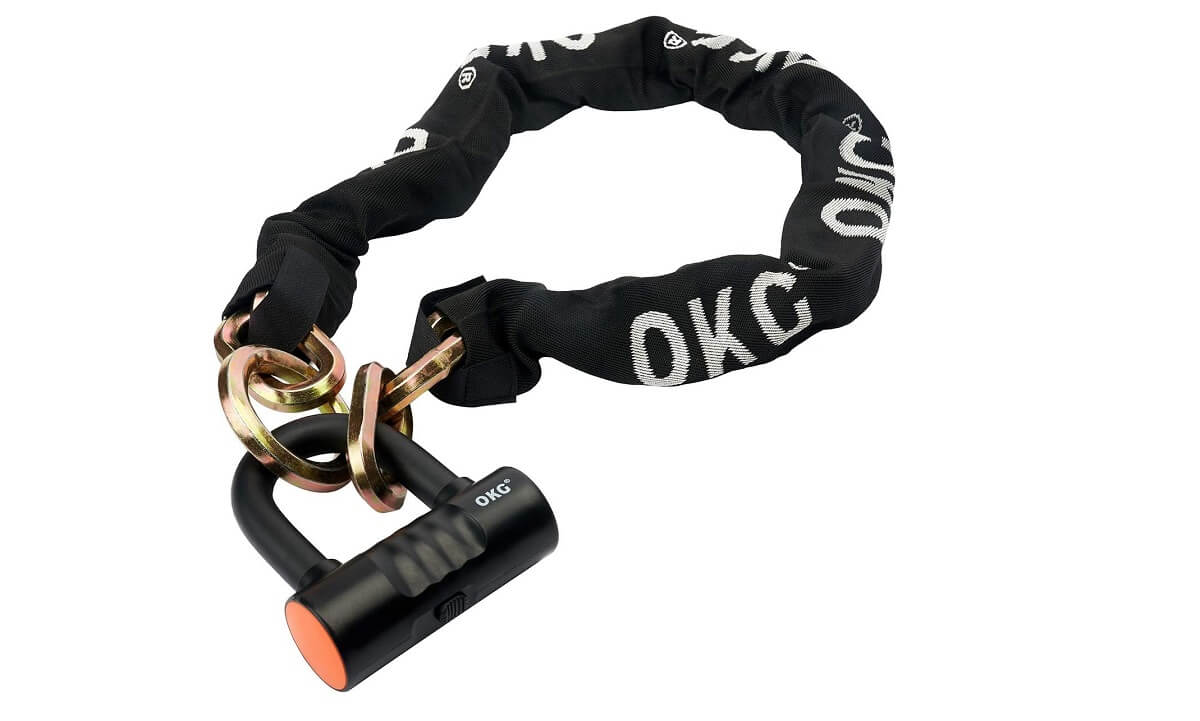
Chain lock is basically a heavier version of a regular bike lock. It’s definitely stronger and more secure than the simpler locks, but it’s got a few downsides. First off, it’s pretty heavy. Also, it takes up a lot of luggage space, which is limited on a motorcycle and you probably whant to use for somehing esle.
And when you use it, you usually have to lock it around your bike’s wheel or lower parts of frame, which means you might have to leave your helmet on the ground for bugs to crawl inside. Personally,
I’d suggest going for a lighter bicycle lock instead. It’s just easier to handle and more practical for everyday use.
- Pros:
- Highly secure, especially with robust chains.
- Cons:
- Leaves the helmet on the ground, exposing it to potential damage or dirt.
- Chains are heavy and more expensive than other options.
- Cumbersome to carry and use for just helmet security.
Small Tips to Consider:
- Always loop the lock through the chin strap or visor, not just the helmet’s exterior.
- Position the helmet so it doesn’t touch the ground or exhaust pipes to avoid damage.
- Choose locks that are weather-resistant to prevent rusting and jamming.
When Is It Safe to Leave Helmets Unlocked?
It’s generally advisable to always lock your helmet. However, in secure, monitored environments like private garages or secure parking areas with surveillance, you may consider leaving it unlocked. Always assess the risk based on your surroundings.
Conclusion
Securing your helmet to your motorcycle is an essential step, especially when you’re exploring different places on your trip. It’s always good to have one less thing to worry about during your travels, contributing to the peace of mind we often seek. Personally, I usually opt for attaching the helmet to the seat, but if I were to buy a dedicated helmet lock, I’d choose a frame lock. Its low-profile, simple design is appealing because it doesn’t consume any storage space. Ride safe, cheers!
